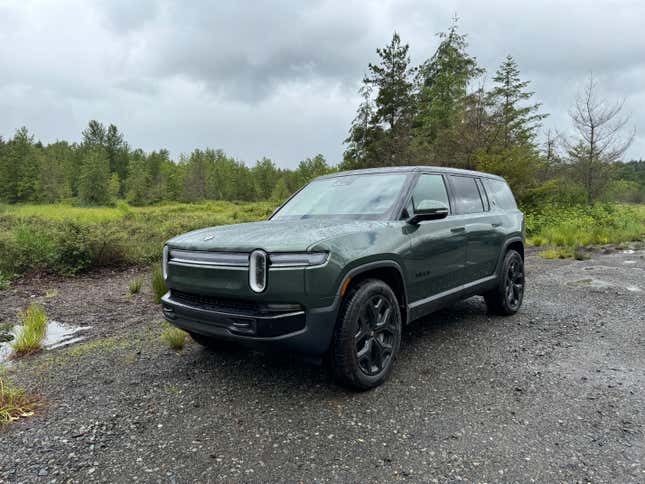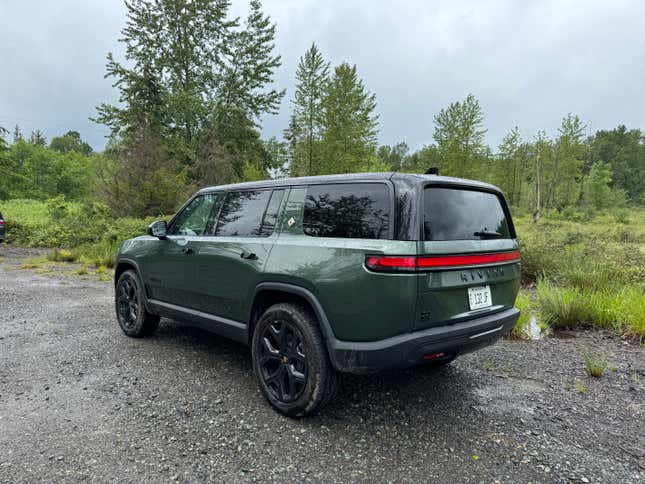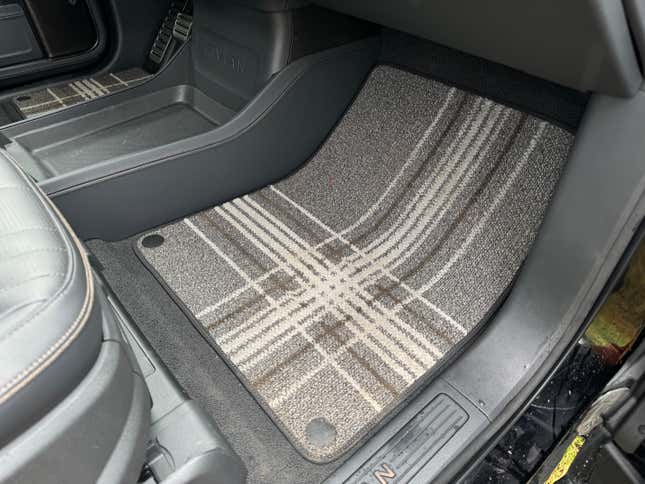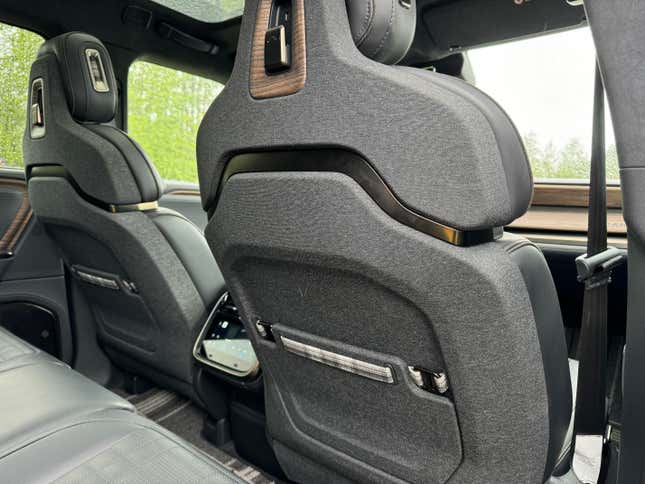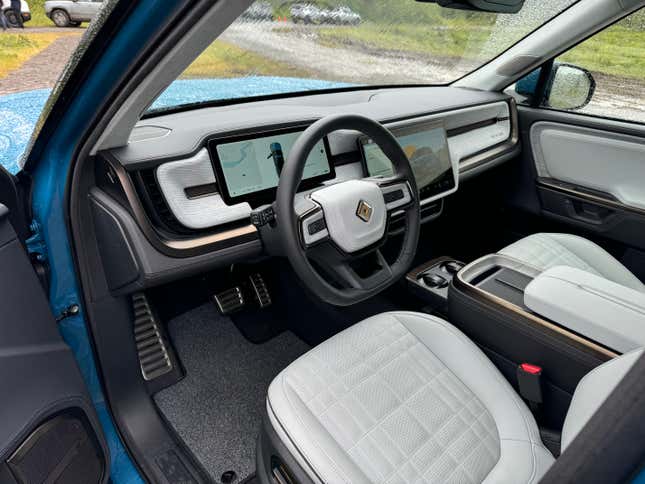Less than three years after first deliveries commenced (but almost eight years after they were originally revealed), Rivian is already facelifting its R1T pickup and R1S SUV. Rivian doesn’t want to simply call this a facelift or mid-cycle refresh, though — instead the brand is calling the updated R1 lineup the “second generation” of the vehicles, despite both models looking basically the same on the outside. I rolled my eyes at the “Gen 2” moniker at first, but after doing a deep dive into the many design and engineering changes made for the EVs and driving the updated R1S and R1T for myself, it actually seems apt.
More than 600 parts have been changed and over half of the hardware components have been updated, with basically every aspect of the trucks getting substantial upgrades. Most importantly to Rivian, the new R1 lineup is massively simplified in terms of the manufacturing process, which means the EVs will be cheaper and easier to build and to service. Most importantly to us, the Gen 2 R1S and R1T are not only better to drive but better to spend time in and better to live with in the long run. For my full driving impressions, you can read my first-drive review here, but keep reading below to get every detail on what’s new and what’s changed.
Powertrains And Performance
Starting off the R1T and R1S lineup are the entry-level Dual-Motor models, which still have 533 horsepower and 610 pound-feet of torque, good enough for a 0-to-60-mph time of 4.5 seconds. Like before, Dual-Motor buyers can choose a Dual-Motor Performance setup that ups output to 665 hp and 829 lb-ft, cutting the 0-to-60 time down to 3.4 seconds, a tenth quicker than before. The Performance version also adds Sport and Soft Sand drive modes, as well as a third, firmer setting for the suspension.
Essentially taking the place of the previous Quad-Motor model in terms of performance and price is a new Tri-Motor setup, with one motor up front and a pair of motors at the rear axle. Total output is 850 hp and 1,103 lb-ft of torque, 15 hp and 195 lb-ft more than the old Quad-Motor R1 models. Rivian says the 0-to-60 run takes just 2.9 seconds, a tenth quicker than the old Quad-Motor, and it gets the full range of drive modes including Conserve, Drift, Rally and Rock Crawl.
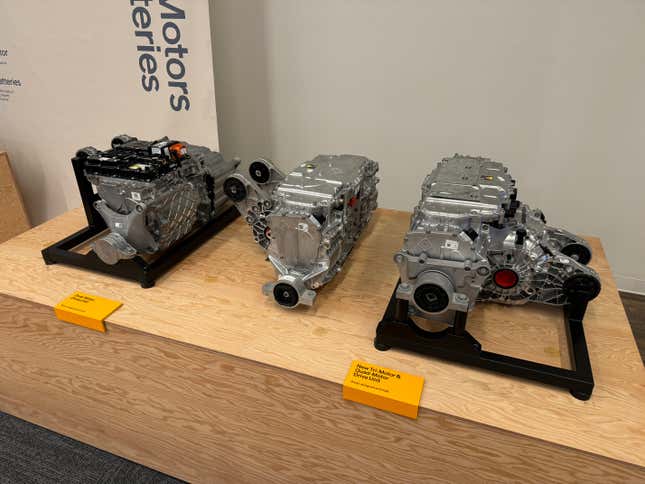
The top dog remains the Quad-Motor, which now uses Rivian’s in-house motors, as well, and makes a whopping 1,025 horsepower and 1,198 lb-ft. There’s a new launch control function (also found on the Tri-Motor) that allows for a sub-2.5-second 0-to-60 time and a quarter-mile time of 10.5 seconds, making them the quickest truck and SUV on the market. To help achieve that searing quarter-mile time, activating Launch mode temporarily raises the top speed from 110 mph to 130 mph. The gauge cluster screen displays telemetry like acceleration times and G-forces, and the car will capture sharable recordings of your acceleration runs.
All of the motors are now oil-cooled, a boon for high-torque, low-speed driving like rock crawling and low-torque, high-speed driving like highway cruising. The Tri-Motor and Dual-Motor share their single-motor front unit, and the Tri-Motor and Quad-Motor use the same larger dual-motor housing at the rear; all of the motor units go down the same assembly line. The Quad’s dual-motor housing at the front is smaller than the rear unit and engineered for efficiency, and the rear motors for every variant are automatically disconnected on-demand to increase range when all-wheel-drive grip isn’t needed. Rivian also totally overhauled the suspension systems, focusing specifically on improving the ride quality of the R1S, which was its one main dynamic pain point. The R1S’ air suspension has new springs with different spring rates, new dampers and a new hydraulic anti-roll system.

The base Standard battery pack is now a lithium-ion phosphate (LFP) unit that offers an EPA-estimated 270 miles of range, the same as before, but with increased efficiency. Optional on the Dual-Motor and standard on the Dual-Motor Performance is the Large pack with up to 330 miles of range. Both the Tri-Motor and Quad-Motor models are only available with the Max pack, which was previously not available on the top-end Quad-Motor; the Max pack offers up to 420 miles of range. The Max pack is also optional on both Dual-Motor variants, too.
Both the Large and Max packs continue to use 2170 cylindrical cells, but the cells have gone from 50G to 53G units. Instead of using extruded aluminum, the Large and Max packs now have a high-pressure die-cast housing that reduces weight, simplifies the manufacturing process and improves serviceability. Every battery configuration can fast-charge using CCS or NACS plugs (the latter with an adapter) to gain 140 miles of range in 20 minutes and go from 10 to 80 percent in as little as 30 minutes. There’s also a heat pump for the thermal system, finally, which only takes up a bit of additional space under the frunk’s removable floor.
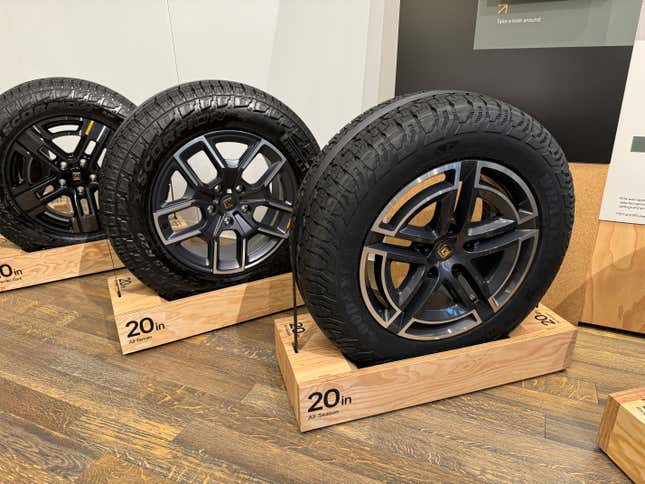
The range-focused 21-inch wheels are no longer on offer, leaving 20s as the base wheel size and 22s as the upgrade. As standard the 20s come with chunky 33-inch Goodyear Wrangler all-season tires, and you can still get an All-Terrain upgrade package that swaps the Goodyears for even chunkier 34-inch Pirelli Scorpion all-terrains. The available 22s are now both the best for handling and the best for range thanks to new Pirelli Scorpion MS tires designed for Rivian. Probably my favorite design change is the optional 22-inch aero wheels, which have removable aero discs that look incredible and hide a design that looks great with them removed, too. With the discs fitted, the R1T has a drag coefficient of 0.297, a slight improvement.
If you want to get the maximum performance out of a Quad-Motor R1, you’ll have to spec the new Ultra High-Performance wheel and tire package. This gets you a staggered-width 22-inch wheel setup wearing Michelin Pilot Sport S5 tires also specially designed for Rivian, sized 275/50 up front and 305/45 at the rear. The five-spoke wheels for this package do look great, but not quite as cool as the aero discs.
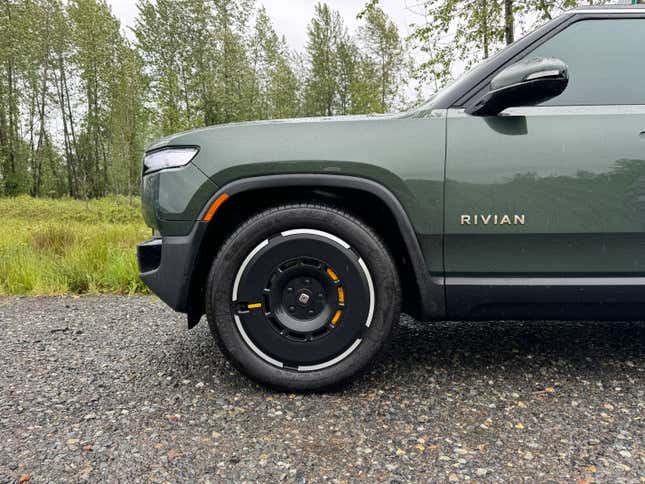
Exterior Design
Only the nerdiest among us will be able to spot the updated R1S and R1T from the outside. The front light bar is redesigned, with a three-dimensional chamfered lower edge and new lined internals. The stadium headlights have new adaptive matrix elements that will allow for automatically adjusting high beams, coming later this year via a software update. The turn signals are now located where the fog lights used to be, which means the running light signature no longer turns off when you have your blinker on, something that really annoyed Rivian’s designers.
Both front and rear lightbars have ten segments in the lower section that act as a charge indicator, with each segment representing 10 percent of the battery’s capacity. Instead of the entire lightbar glowing green while charging like before, the segments light up in sequence to give you a better look at your vehicle’s state of charge at a glance. These segments can also blink orange in sequence, either going from left to right or vice versa or from the center out, to act as emergency arrows to help direct traffic around the vehicle if there is an accident or hazard ahead.
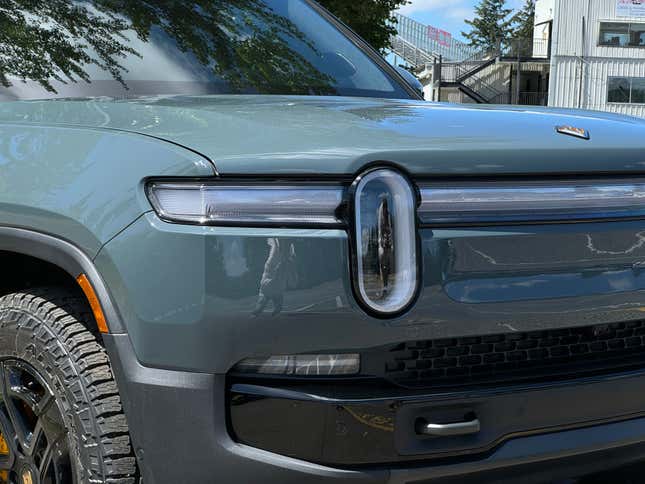
You can spot a Tri-Motor R1 by the yellow brake calipers and badge accents, previously used to denote Quad-Motor models. Thus, the Quad-Motors get a new Laguna Beach Blue hue for the calipers and badge surrounds, plus an ultra-cute badge on the tailgate depicting Rivian’s Gear Guard sasquatch mascot with his fur getting blown back. The color palette remains the same aside from the introduction of a new paint called Storm Blue that’s available on Tri- and Quad-Motor models, a dark teal-like color that has nice bright sparkles to it in sunlight. A new Darkout package gives all of the brightwork a dark satin finish; it’s optional on the Dual-Motor cars but standard on the Tri- and Quad-Motors, though you can opt for the bright trim and badges on those models too. Other than the aero disc design, the wheel options are also the same as before.
Interior Design
Tri- and Quad-Motor models come standard in Rivian’s new Ascend trim level, which has a number of more luxurious touches than the Adventure trim of the Dual-Motor cars. The vegan leather-like upholstery feels smoother and softer than what’s in the Adventure trims, and the seat centers get a Mondrian-esque stitching pattern and subtle Rivian logos. Even the lower sections of the center console and door panels are wrapped in the fancier material and are cut and sewn with contrasting stitching, and a cool fabric covers the seatbacks. The carpets are a deeper-pile material with a fantastic plaid design, and the same plaid motif is found in details like the door pocket elastic bands and headrest trims.
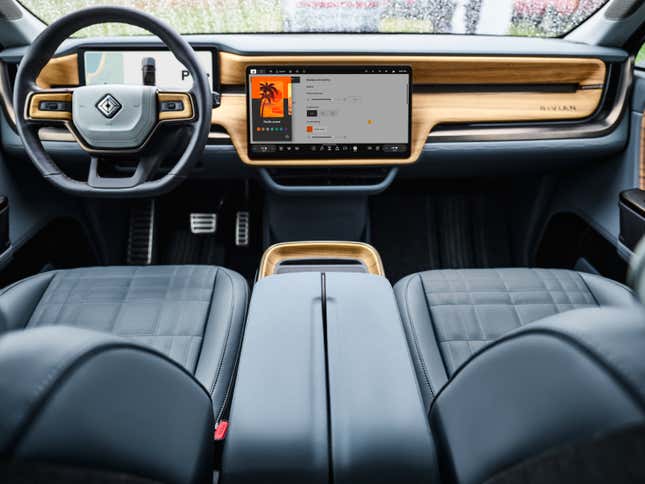
Sadly the Forest Edge green interior is no more, but its replacement is a fantastic two-tone slate blue and light grey color scheme with light brown wood and matching stitching that looks phenomenal. The other two interior options are the Black Mountain, which has green accents and dark wood, and the light grey Ocean Coast, which has new light grey wood. On Ascend trims all of the interior metal gets a slick new dark bronze finish, too.
The door latches are now electronic, with small buttons on the door panels right where your thumb naturally rests when grabbing the handle and a physical emergency release ahead of them. On models without the camp speaker, the center console has a slide-out storage cubby. Every R1 continues to have a fixed panoramic glass roof, but it’s now available with an electrochromic coating that does a good job of reducing glare, brightness and heat. Customizable ambient lighting is also new, with a number of curated color schemes that have screen animations and ambient noises to go along with each one.
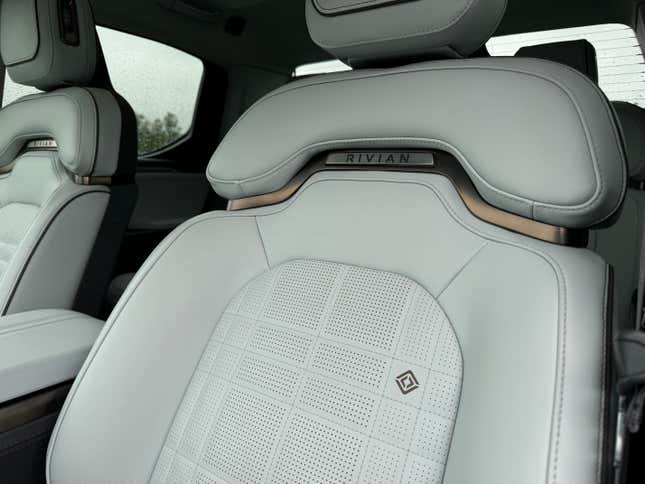
Technology And Safety
Perhaps the most substantial improvement is in the R1’s electrical architecture and computer systems. The number of ECUs has been reduced from 17 to just seven: the autonomous systems, battery management, infotainment and vehicle access all get their own ECUs, but all other vehicle functions are consolidated into three ECUs, determined by the geographical location of each system and whether the functions are real-time or on-demand. The shift to this zonal system led to the removal of 1.6 miles of wiring, a weight savings of 44 pounds. Thermal fuses have been replaced by e-fuses that can cut off a short circuit immediately, and each pin can be easily identified and reset by software, making it faster to diagnose and fix an issue. There is also less range loss when the vehicle is off or the infotainment system and comfort features are being used when parked, as the low-voltage battery is always topped off and not getting cycled.
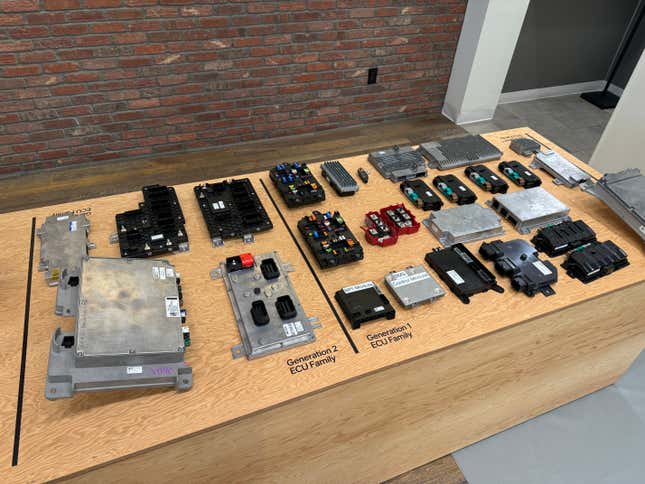
The infotainment system has been totally redesigned, still powered by Epic Games’ Unreal Engine with greater rendering capabilities thanks to the new electronics. It has a newly created font that’s more attractive and easier to read, menus that are easier to navigate, and more fleshed-out information pages. Where the current Rivians have super-realistic 3D models shown on screens like the drive mode display, the new system has a wonderful illustration style inspired by cel-shaded animated movies. Chief Design Officer Jeff Hammoud tells me the team wanted to be more playful with the system, remarking, “Do you really need an exact replica of what you’re sitting inside of, or can we have more fun?”
What looks like static cartoon images are actually 3D models that the user can move around by swiping with two fingers. Each drive mode has its own unique design that shows the R1 (in your car’s exact spec) in a relevant vignette with subtly moving elements in the background or foreground, and when switching between modes the vehicle is seamlessly animated as if it’s driving through each scene. Hammoud says this new style is only possible because of how closely the design and software teams work together, and because of the additional processing power of the computers. Gen 1 vehicles will get the new infotainment as a software update, but there will be future design updates and added functions that will only work on Gen 2 cars.
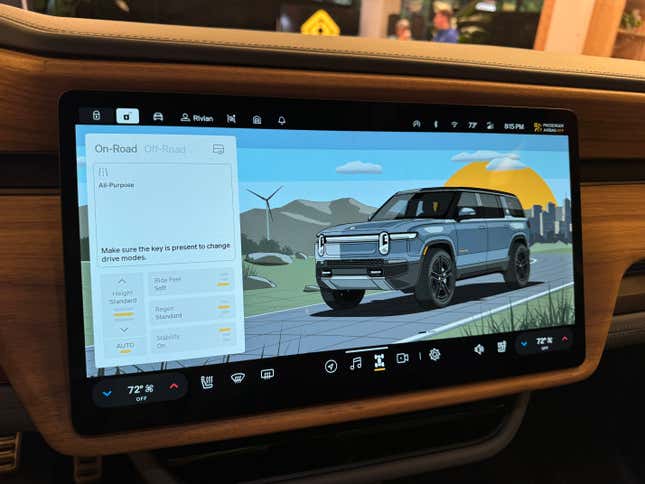
Ascend trims have a new Rivian Premium Audio system that has Dolby Atmos capability through Apple Music with Spatial Audio, and it sounds pretty awesome. To go along with the new sound system and infotainment, Rivian is launching a Connect+ subscription service that gives the car access to more than 3,000 apps for $14.99 per month. Users can also cast their apps such as YouTube from their phone to the car. The digital key can now be used with Apple Wallet on an iPhone or Apple Watch, or with some Google Pixel phones. Rivian says the wireless charger in the center console is “much improved,” but it doesn’t work with my iPhone 15 Pro in any of the trucks I get in.
Also completely overhauled is the R1’s standard suite of safety technology called the Rivian Autonomy Platform. It now uses 11 cameras that were developed in-house and five radar sensors, with Chief Software Officer Wassym Bensaid saying multiple modalities and hardware redundancy within the system are hugely important for the brand. The cameras have 8 times more megapixels than before (the most of any car in North America, according to Rivian), can see three times farther, and the image quality for the surround-view and blind-spot cameras is leagues better than the old crappy ones. The main front radar can see objects 1,000 feet away, and front corner radars give an overlapping field of view.
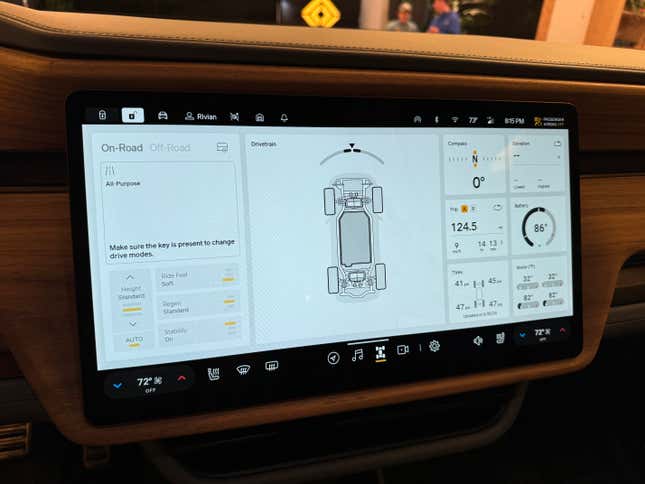
The Autonomy Platform is powered by two NVIDIA processors that can perform 250 trillion operations per second — your iPhone can only accomplish 35 trillion per second — and the module has 10 times more computing power than before. Only about half of the computers’ capacity is currently being used by the vehicles, so there’s a ton of room for the system to improve and expand over time. Rivian says the driver-assist systems work better in bad weather like rain and fog and tricky light conditions like tunnels. The Gen 2 models will be available with a Rivian Autonomy Platform+ upgrade that offers additional features, the first being automatic lane changes this summer and then conditionally hands-free Enhanced Highway Assist later this year.
Pricing And Availability
The updated R1 models are available to order now, with first deliveries commencing tomorrow. If you’ve already got a reservation or an order it will be converted to the Gen 2 model, and any new orders placed starting today will be the updated model as well. The first versions to launch are the Dual-Motor, with the R1S coming first and the R1T to follow. First deliveries of the Tri-Motor models will come in the summer, with the Quad-Motors launching closer to the end of the year.
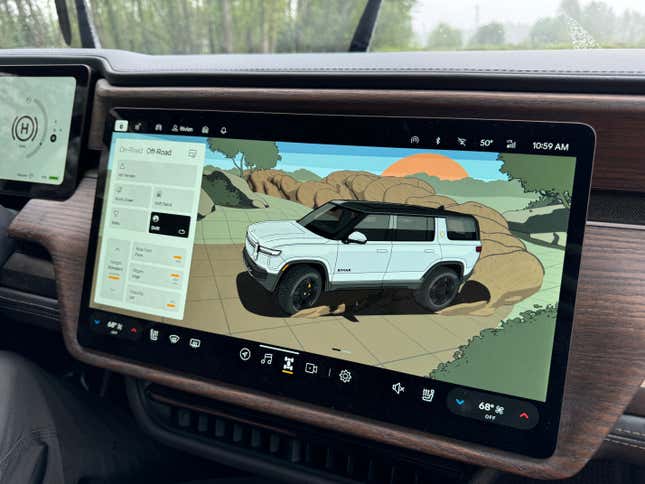
With the Standard battery pack, the R1T starts at $71,700 (including $1,800 for destination), the same as before, while the R1S costs $77,700, an increase of $1,000. The Large pack costs an additional $7,000, and upgrading to the Max pack costs $14,000 more than the Standard battery, both the same prices as before. A Tri-Motor R1T with the Max pack will set you back $101,700 and the Tri-Motor Max pack R1S starts at $107,700, both around $13,000 more than the old Large pack Quad-Motor models but only a couple grand more than the previous Dual-Motor Performance models with the Max pack. Pricing has yet to be announced for the Quad-Motor R1 lineup, but expect them to cost at least $120,000, if not quite a bit more.
Rivian will continue to build the R1 models at its plant in Normal, Illinois, which is also gearing up to start production of the upcoming R2. The company says the Gen 2 cars have 50 percent less carbon emissions from manufacturing compared to the Gen 1, as well as a 15-percent-lower lifetime carbon footprint. Because there are fewer components to install and so much of the vehicle’s engineering has been streamlined, the manufacturing process is much cheaper, easier, quicker and results in higher quality. That’s all key for Rivian’s survival and potential to thrive as a company, and I really hope it survives and thrives — the new R1T and R1S were already two of the best new vehicles in any segment, and now they’re even better.
